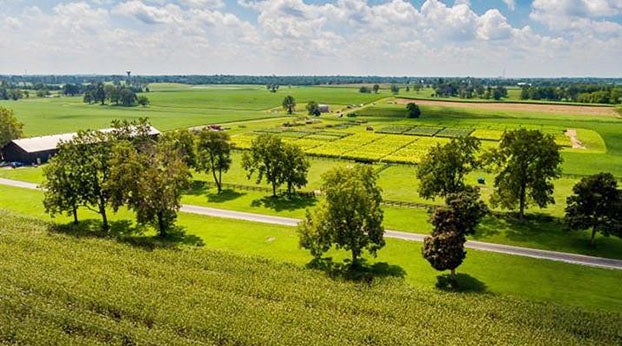FARM FACTS: Reduce losses when feeding hay
Published 11:24 am Thursday, December 15, 2016
By Will Stallard , U.K. Extension Agent for Agriculture
This winter, hay supplies could be tight on some farms across the state. Most hay was cut at mature stage because of spring rains. Many producers had to begin feeding hay earlier than normal because of the fall drought conditions. Therefore, it is important not to waste this valuable commodity when feeding it to cattle.
Reducing hay losses during feeding decreases waste, so cattle consume most of it. Hay losses can be the result of trampling, leaf shatter, chemical and physical deterioration, fecal contamination and simply the animal’s refusal to eat it.
Feeding losses in various research trials have ranged from less than two percent to more than 60 percent where no attempts were made to reduce loss. With a slightly questionable hay supply farmers cannot afford to let their hay be reduced to rubbish.
Also, remember when you lose hay, you are losing money. It does not matter whether you baled it yourself or purchased the hay, there is a cost involved with hay production.
With some simple changes, feeding losses of three to six percent are quite common and acceptable for most conservative feeding programs, although the lower levels are associated with feeding programs requiring high labor and daily feeding.
Large round bales are the preferred choice for most cattle producers in Kentucky. One easy way to help reduce losses is to use hay rings or racks with large round bales. The rings limit access to the hay and can help reduce loss by keeping cattle from trampling and bedding down in the hay. Be sure to provide enough rings to accommodate the number of animals feeding and have the animals clean up the majority of the hay before providing more.
Producers should avoid feeding in areas of excessive mud which can cause waste and are hard on the animals. Hay feeding areas can be constructed by putting rock over geotextile fabric. Cost share programs are available to aid in construction. There is still time to build a feeding area before winter and information is available through the local office of the U.S. Natural Resources Conservation Service.
Storage options can also impact the amount of hay your cattle will ultimately consume. Bales stored outside will degrade quickly and result in less hay available than bales stored under roof. Feed bales in outside storage first to reduce excessive loss.
For more information, on hay feeding management, contact Will Stallard, Agriculture Agent at the Lincoln County Extension Office, 104 Metker, Stanford, 365-2447.



